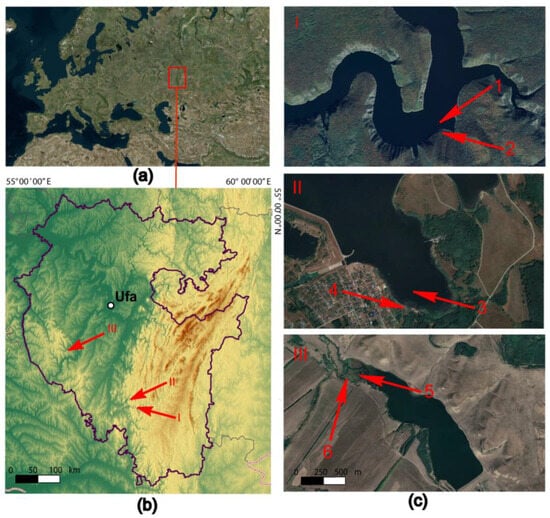Journal Description
Ecologies
Ecologies
is an international, peer-reviewed, open access journal on all aspects of ecology published quarterly online by MDPI.
- Open Access— free for readers, with article processing charges (APC) paid by authors or their institutions.
- High Visibility: indexed within ESCI (Web of Science), Scopus, EBSCO, and other databases.
- Rapid Publication: manuscripts are peer-reviewed and a first decision is provided to authors approximately 19.8 days after submission; acceptance to publication is undertaken in 4.1 days (median values for papers published in this journal in the second half of 2023).
- Recognition of Reviewers: APC discount vouchers, optional signed peer review, and reviewer names published annually in the journal.
Latest Articles
Soil Bacterial and Archaeal Communities of the Periodic Flooding Zone of Three Main Reservoirs in the South Ural Region (Russia)
Ecologies 2024, 5(2), 233-247; https://doi.org/10.3390/ecologies5020015 - 16 Apr 2024
Abstract
Studying the soils in the periodical flood zone of three reservoirs is of promising importance for their subsequent return to economic activities. Research on the bacterial and archaeal communities of soils that are periodically or continuously flooded by reservoirs is still insufficient. To
[...] Read more.
Studying the soils in the periodical flood zone of three reservoirs is of promising importance for their subsequent return to economic activities. Research on the bacterial and archaeal communities of soils that are periodically or continuously flooded by reservoirs is still insufficient. To evaluate the chemical status of soils and their microbiota, the study was conducted in the Yumaguzino, Nugush, and Slak reservoir sites in the South Ural area (Russian Federation). The bacterial and archaeal communities of periodically flooded and non-flooded soils were investigated after a comparative investigation of chemical, hydrological, and climatic factors. It was discovered that flooded soils had anoxic conditions during the whole of the year, with brief drying intervals of limited length and low levels of effective temperatures. In terms of chemistry, flooded soils are distinguished by increased acidity, a fall in organic matter, and an increase in alkali-hydrolysable nitrogen. Compared to their counterparts in non-flooded soils, bacterial and archaeal communities in flooded soils are significantly different. Generally speaking, the biodiversity of flooded soils rises with the duration and depth of floods. Significant variations at the phylum level are mostly caused by a decline in the relative presence of Thaumarchaeota and an increase in Proteobacteria and Chloroflexi representation. It was discovered that the Euryarchaeota phylum was either absent or had a significantly decreased relative prevalence at the sites of intermittently flooding soils.
Full article
(This article belongs to the Special Issue Freshwater Ecology and Conservation: Threats, Opportunities, and Solutions)
►
Show Figures
Open AccessArticle
Implications of Climate-Induced Localised Extinction of Bull Kelp (Durvillaea amatheiae) for Holdfast Macrofauna
by
Tom R. Davis, Matt J. Nimbs, Andrew Benson and Steve D. A. Smith
Ecologies 2024, 5(2), 218-232; https://doi.org/10.3390/ecologies5020014 - 14 Apr 2024
Abstract
Globally, work is being undertaken to preserve biodiversity and prevent further species extinctions. Yet, without adequate data about the presence of species within ecosystems, hidden extinctions can occur without our knowledge. Given that poleward range retractions are projected for bull kelp (Durvillaea
[...] Read more.
Globally, work is being undertaken to preserve biodiversity and prevent further species extinctions. Yet, without adequate data about the presence of species within ecosystems, hidden extinctions can occur without our knowledge. Given that poleward range retractions are projected for bull kelp (Durvillaea amatheiae) in southeastern Australia, there is the potential for hidden extinctions to occur in associated macrofaunal species. However, this risk cannot be assessed due to the limited data on the invertebrate macrofauna associated with D. amatheiae. We documented macrofauna within D. amatheiae holdfasts, with the objective of establishing a first analysis of the holdfast fauna for this kelp and identifying, where possible, any host-specific taxa. Holdfasts were collected at six locations, spanning most of the range of D. amatheiae on the southeastern Australian mainland. Macrofauna were removed from holdfasts and identified to the lowest possible taxonomic level. Modelling was applied to determine factors correlated with patterns of assemblages among locations. Holdfast assemblages were found to vary significantly among locations and exhibited a latitudinal gradient in assemblage structure. The northernmost location (Aragunnu), which has the highest risk of D. amatheiae range retractions, was found to have distinct species assemblages and generally higher diversity and abundance than locations further south. However, no host-specific taxa were identified in samples, indicating that there is a low risk of multiple hidden species extinctions occurring in holdfast macrofauna, due to future range retractions of D. amatheiae. Rather, most of the macrofauna taxa in D. amatheiae holdfasts were found to also occur in association with the sympatric golden kelp Ecklonia radiata, which is not expected to undergo range retractions at the latitudes where losses of D. amatheiae are projected. Overall, there is an urgent need to develop strategies to combat projected future range retractions of D. amatheiae to reduce impacts on the species that rely on D. amatheiae for habitat.
Full article
(This article belongs to the Topic Climate Change and Aquatic Ecosystems: Impacts, Mitigation and Adaptation)
►▼
Show Figures
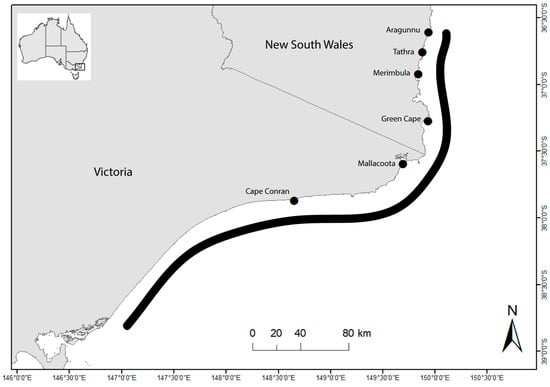
Figure 1
Open AccessArticle
Effects of Landscape Heterogeneity and Disperser Movement on Seed Dispersal
by
Michael G. Just, Wade A. Wall, Stacy D. Huskins and Matthew G. Hohmann
Ecologies 2024, 5(2), 198-217; https://doi.org/10.3390/ecologies5020013 - 11 Apr 2024
Abstract
►▼
Show Figures
The primacy of endozoochory for the maintenance and expansion of many woody plant populations is well known, but seed dispersal is not well understood for most species. This is especially true for rare species, where small population size and low fruit production can
[...] Read more.
The primacy of endozoochory for the maintenance and expansion of many woody plant populations is well known, but seed dispersal is not well understood for most species. This is especially true for rare species, where small population size and low fruit production can limit field- or observation-based experiments. Additionally, the effect of environmental heterogeneity on disperser movement is rarely investigated but has been shown to improve estimates of plant population spatial patterns and dynamics. We used simulation experiments to explore the effects of environmental heterogeneity and disperser movement on Lindera subcoriacea seed dispersal, a rare shrub from the southeastern United States with avian-dispersed seeds. Our experiments incorporated environmental heterogeneity and simulated disperser movement for five bird species, based on either landscape permeability or straight path rules. We anticipated that permeability-based movement would result in greater dispersal distances and seed dispersal effectiveness, which characterizes both quantity and quality. Generally, we did not find differences in seed dispersal between permeability and straight path experiments. However, we did find that permeability-based experiments had greater deposition into suitable habitat during flight (23 vs. 1%). These rare but longer distance depositions may be especially important for plants that are influenced by gap or interpopulation dynamics. We also found consistently greater dispersal into high quality habitats regardless of disperser species in permeability experiments, implying that incorporating species-specific assessments of landscape utilization (occupancy) could influence the effectiveness of seed dispersal. Our study suggests that including environmental heterogeneity in seed dispersal models can provide additional insights not provided by avian parameters (e.g., gut capacity, seed retention time, and flight speed) commonly used to inform dispersal models.
Full article
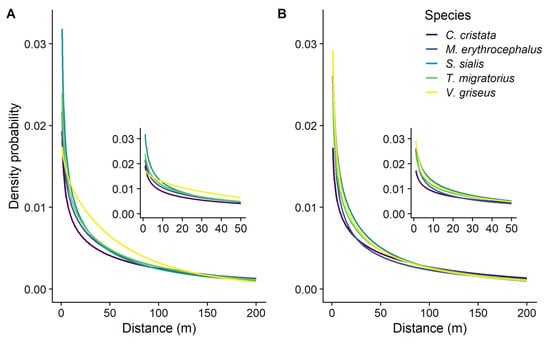
Figure 1
Open AccessArticle
Polluted Rivers—A Case Study in Porto, Portugal
by
Patrícia Lemos, Paulo Silva, Cátia A. Sousa and Abel J. Duarte
Ecologies 2024, 5(2), 188-197; https://doi.org/10.3390/ecologies5020012 - 06 Apr 2024
Abstract
River contamination by microorganisms, or another chemical source, poses a serious threat to both the environment and public health. Taking immediate and appropriate actions is essential to mitigate the contamination and prevent further spread. As such, regular monitoring of these pollution agents is
[...] Read more.
River contamination by microorganisms, or another chemical source, poses a serious threat to both the environment and public health. Taking immediate and appropriate actions is essential to mitigate the contamination and prevent further spread. As such, regular monitoring of these pollution agents is essential to act in time and control its minor extension. However, there is a lack of commitment to this emergent concern and respective actions around the world. This work aims to study the contamination of a Portuguese river (Tinto River) within Porto city (a highly populated urban area) regarding the total aerobic microorganisms, coliforms, and Enterococcus (as colony-forming units (CFUs) using specific solid culture media) and total organic matter (TOC). Different locations were considered along the Tinto River course (i.e., 14 locations within 11 km) and samples were collected on distinct days throughout September 2022. The overall results showed microbial contamination of aerobic microorganisms (up to 2 × 105 CFU/100 mL), total coliforms (up to 7 × 104 CFU/100 mL), Escherichia coli (up to 9 × 103 CFU/100 mL), and Enterococcus (up to 8 × 103 CFU/100 mL). The results also surpassed the maximum recommended values (MRVs) described in Portuguese decree-law no. 236/98 for irrigation waters. Moreover, TOC was found in a range of 4.54 mg/L to 57.2 mg/L. This work highlights the dangerous microbial contamination and higher amount of organic matter than would be expected for a surface water resource.
Full article
(This article belongs to the Topic Marine Ecology, Environmental Stress and Management)
►▼
Show Figures
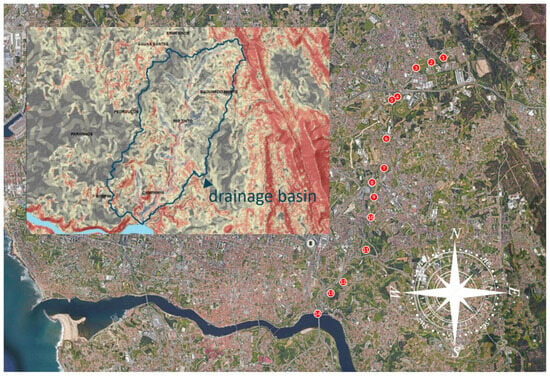
Figure 1
Open AccessArticle
Exploring mtDNA Databases to Evaluate the Population Structure and Genetic Diversity of Tursiops truncatus in the Atlantic Ocean: Implications for the Conservation of a Small, Offshore Population
by
Brenda Godoy Alexandre, Marcelo Merten Cruz, Karina Bohrer do Amaral, Lilian Sander Hoffmann, Thales Renato Ochotorena de Freitas and Rebeca Zanini
Ecologies 2024, 5(2), 170-187; https://doi.org/10.3390/ecologies5020011 - 27 Mar 2024
Abstract
►▼
Show Figures
Inshore and offshore bottlenose dolphin, Tursiops truncatus, ecotypes were distinguished through genetics, distribution, diet, morphology, diversity, and social behaviors. Although T. truncatus is a widely studied species, few studies have focused on offshore populations. Offshore biodiversity is frequently neglected due to the
[...] Read more.
Inshore and offshore bottlenose dolphin, Tursiops truncatus, ecotypes were distinguished through genetics, distribution, diet, morphology, diversity, and social behaviors. Although T. truncatus is a widely studied species, few studies have focused on offshore populations. Offshore biodiversity is frequently neglected due to the difficulty of data collection, and therefore, it is challenging to assess how threatened these populations are. A small, offshore population of dolphins residing around the Saint Peter Saint Paul Archipelago (SPSPA) in the middle of the Atlantic Ocean has been monitored for several years, and a decrease in the number of dolphin sightings has recently been noticed. We analyzed a comprehensive mtDNA control-region sequence dataset for this species to infer the conservation status and better understand the relationships between the SPSPA population and other offshore populations. We assessed the genetic diversity and population structure of the bottlenose dolphin from inshore and offshore populations of the Atlantic Ocean. Offshore populations are more genetically diverse and have less variation between populations than inshore populations. The offshore populations share haplotypes, indicating potential gene flow. However, the SPSPA population presented the lowest levels of genetic diversity between populations. The conservation status of the SPSPA population is concerning, and it is necessary to apply effective management strategies to guarantee its protection.
Full article
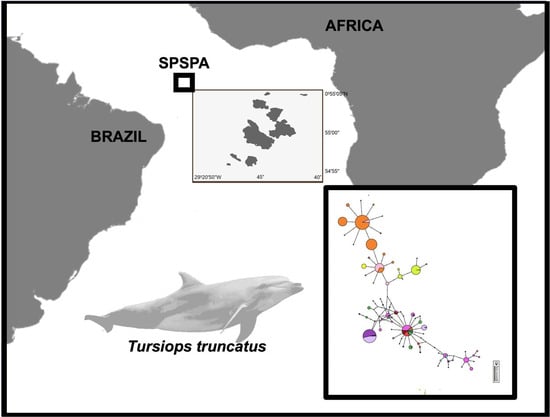
Graphical abstract
Open AccessArticle
Conservation Priorities for Threatened Fish to Withstand Climate Crisis: Sustainable Capture and Protection of Inland Hydrographic Ecosystems
by
Joya Dutta, Ibrahim Khalil Al Haidar, Mohammed Noman and Mohammad Abdul Wahed Chowdhury
Ecologies 2024, 5(2), 155-169; https://doi.org/10.3390/ecologies5020010 - 26 Mar 2024
Abstract
►▼
Show Figures
Globally, suitable freshwater habitats are undergoing alterations and fish population declines, primarily attributed to the swift changes in climate and land use. Developing an effective conservation policy for freshwater fish necessitates careful consideration of the impacts of climatic and spatial factors. This study
[...] Read more.
Globally, suitable freshwater habitats are undergoing alterations and fish population declines, primarily attributed to the swift changes in climate and land use. Developing an effective conservation policy for freshwater fish necessitates careful consideration of the impacts of climatic and spatial factors. This study focuses on the analysis of 64 threatened freshwater fish in Bangladesh to anticipate their current and future climatically suitable habitats, utilizing the bioclim() species distribution model. Additionally, this study examines existing inland hydrographic networks and their corresponding harvest rates. The findings indicate that approximately 75% of the area of occupancy for the studied species is currently climatically suitable, but this is expected to decrease to 13% under future climate scenarios. Notably, 27 threatened species are at risk of lacking climatically suitable habitats in the future within their current area of occupancy. The three components of hydrographic networks—floodplains, rivers, and natural lakes—play varying roles in providing a climatically suitable habitat for the studied species. For instance, only 34% of threatened fish species are projected to find a suitable habitat over flood areas, 23% over rivers, and 16% over lakes. Existing protected areas presently offer limited protection (21% suitable area), expected to decline to 6% in the future, with no dedicated protected areas for freshwater fish. Floodplains are highlighted for providing habitat connectivity and facilitating brood fish dispersal. However, the unregulated and unmonitored annual harvest of freshwater fish from floodwater and rivers poses a potential silent cause for rapid population decline. Prioritizing the management of hydrographic components to maintain habitat connectivity, legal protection for threatened fish species, and establishing permanent protected areas for fish are crucial aspects in developing a conservation policy to mitigate the impact of future climate scenarios on threatened freshwater species.
Full article
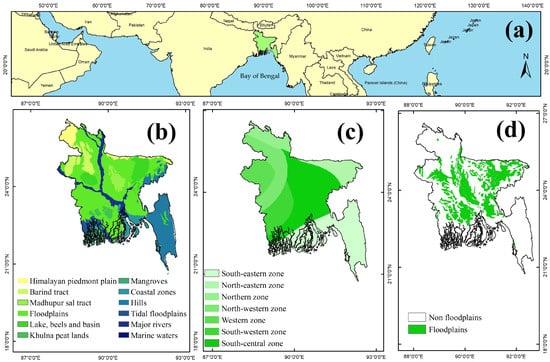
Figure 1
Open AccessArticle
Odonata, Coleoptera, and Heteroptera (OCH) Trait-Based Biomonitoring of Rivers within the Northwestern Rif of Morocco: Exploring the Responses of Traits to Prevailing Environmental Gradients
by
Sara El Yaagoubi, Augustine Ovie Edegbene, Mohamed El Haissoufi, Rihab Harrak and Majida El Alami
Ecologies 2024, 5(1), 132-154; https://doi.org/10.3390/ecologies5010009 - 28 Feb 2024
Cited by 1
Abstract
►▼
Show Figures
This study aimed to determine the impact of various pressures on the functional composition of OCH (Odonata, Coleoptera, and Heteroptera) in streams within the northwest Rif region of Morocco. We examined how OCH traits respond to human-induced pressures in selected stream sites in
[...] Read more.
This study aimed to determine the impact of various pressures on the functional composition of OCH (Odonata, Coleoptera, and Heteroptera) in streams within the northwest Rif region of Morocco. We examined how OCH traits respond to human-induced pressures in selected stream sites in Morocco’s northwestern Rif region. OCH specimens were collected from 36 sites using a Surber sampler with dimension of 20 × 20 cm and mesh size of 500 µm over the course of two years, from 2021 to 2023. We measured physico-chemical and hydraulic parameters such as temperature, pH, DO, and NO-3. Sixty-seven trait attributes from 11 trait classes were assigned to the collected OCH taxa at the family level. Following the delineation of sites along the gradient of impacts in the study area, we categorized 7 sites as slightly impacted sites (SISs), 19 sites as moderately impacted sites (MISs), and 10 sites as heavily impacted sites (HISs). We successfully identified and categorized the traits as either vulnerable or tolerant based on RLQ models. Traits such as reproductive cycles per year and tegument respiration, which were positively correlated with SISs in the RLQ model and also positively correlated with depth and chlorine, were identified as vulnerable traits. Crawling locomotion and full water swimming were identified as tolerant traits. The distribution patterns of the OCH taxa revealed a robust correlation between the taxa and the sampling sites. Notably, taxa such as Nepidae, Naucoridae, and Corixidae exhibited widespread distribution and a strong association with the SISs. On the other hand, traits related to living macroinvertebrate food sources and reproduction in vegetation, specifically clutches, exhibited a negative correlation with total dissolved solids. Incorporating OCH functional traits into biomonitoring programs allows for a more comprehensive assessment of river ecosystems. This approach provides a nuanced understanding of how different stressors impact the community composition and overall ecological health.
Full article
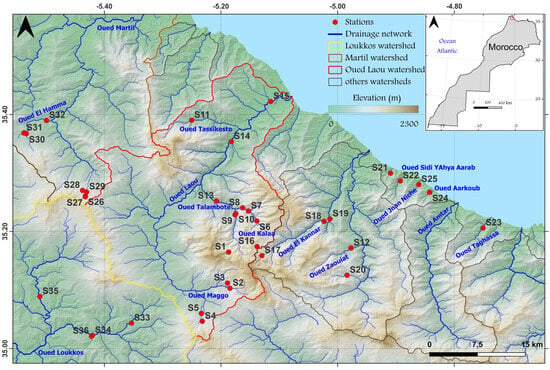
Figure 1
Open AccessArticle
How Do Nitrogen Deposition, Mowing, and Deer Grazing Drive Vegetation Changes on Dune Heaths?
by
Mathias Emil Kaae, Fenjuan Hu, Jesper Leth Bak, Morten Tune Strandberg and Christian Frølund Damgaard
Ecologies 2024, 5(1), 116-131; https://doi.org/10.3390/ecologies5010008 - 27 Feb 2024
Abstract
Heathland vegetation has undergone significant changes in the past century, e.g., due to airborne pollutants and a lack of proper management. Understanding the interactions between these factors in combination is pivotal for heathland conservation. Here, we studied the vegetation changes at a dune
[...] Read more.
Heathland vegetation has undergone significant changes in the past century, e.g., due to airborne pollutants and a lack of proper management. Understanding the interactions between these factors in combination is pivotal for heathland conservation. Here, we studied the vegetation changes at a dune heath in a four-year manipulation experiment analysing the combined effects of nitrogen deposition, mowing, and deer grazing. Our results showed no significant effect of nitrogen deposition and deer grazing on plant growth and cover of dwarf shrubs within the experimental plots. However, high loads of nitrogen decreased bryophyte cover and increased the growth and cover of sand sedge Carex arenaria L. Mowing adversely affected the dwarf shrub community, e.g., the dwarf shrub species crowberry Empetrum nigrum L., and facilitated increased cover and plant growth of graminoids. Plant growth and the cover of C. arenaria increased in plots without deer grazing, whereas bryophyte cover decreased significantly without grazing. We do not recommend intensive mowing of vegetation as a conservation method for dune heaths because it promotes graminoids. From a conservation aspect, it is essential to consider the effect of deer on heathlands because they both impede some species and benefit others and mitigate the adverse effects of nitrogen deposition on dune heaths.
Full article
(This article belongs to the Special Issue Plant Communities: Identification, Monitoring and Evaluation of Temporal Dynamics)
►▼
Show Figures

Figure 1
Open AccessArticle
Citrus Aphids in Algarve Region (Portugal): Species, Hosts, and Biological Control
by
Paulo Eduardo Branco Paiva, Luís Mascarenhas Neto, Natália Tomás Marques, Beatriz Zarcos Duarte and Amílcar Marreiros Duarte
Ecologies 2024, 5(1), 101-115; https://doi.org/10.3390/ecologies5010007 - 19 Feb 2024
Abstract
►▼
Show Figures
Aphids affect citrus by causing leaf deformations and reducing fruit production. Additionally, aphids are a great concern due to their ability to transmit Citrus tristeza virus (CTV), the cause of tristeza, one of the main citrus diseases. In the last four years, citrus
[...] Read more.
Aphids affect citrus by causing leaf deformations and reducing fruit production. Additionally, aphids are a great concern due to their ability to transmit Citrus tristeza virus (CTV), the cause of tristeza, one of the main citrus diseases. In the last four years, citrus orchards in the south of Portugal (Algarve region) were sampled for aphid species identification and counting. Aphis spiraecola was the most abundant species, representing more than 80% of all identified aphids, and the damage (leaf deformation) it causes was directly proportional to its density. A. gossypii was the second most common species, followed by A. aurantii and Macrosiphum euphorbiae. The number of aphids in nymph stages was predominant over the adult stages (both wingless and winged) in all species. A. citricidus, the most efficient CTV vector, was not detected. The largest populations of A. spiraecola were observed in lemon and orange trees during spring (>100 individuals per shoot), with great damage observed in orange, lemon, and mandarin trees. A. gossypii was observed mainly in mandarin and tangor trees. There was a low activity of natural biological control agents, with the parasitism of A. spiraecola by Lysiphlebus spp. and Binodoxys spp. ranging from 0.3 to 1.5%. The numerical ratio ranged from 150 to 440 aphids per predator, and among these, syrphids were the most abundant, followed by lacewings and coccinellids (Scymnus).
Full article

Figure 1
Open AccessArticle
Practice and Biodiversity of Informal Ornamental Horticulture in Kinshasa, Democratic Republic of Congo
by
Léa Mukubu Pika, Trésor Mbavumoja Selemani, Roselande Jesuka, Jean Pierre Pitchou Meniko To Hulu, Kouagou Raoul Sambieni, Yannick Useni Sikuzani and Jan Bogaert
Ecologies 2024, 5(1), 83-100; https://doi.org/10.3390/ecologies5010006 - 08 Feb 2024
Abstract
Biodiversity conservation is a key factor in meeting sustainable development goals. This is even more important in cities, where green spaces are becoming increasingly scarce. This study analyzes Kinshasa’s proliferating ornamental plant nurseries, known as informal horticultural sites (IHSs). The analysis focused on
[...] Read more.
Biodiversity conservation is a key factor in meeting sustainable development goals. This is even more important in cities, where green spaces are becoming increasingly scarce. This study analyzes Kinshasa’s proliferating ornamental plant nurseries, known as informal horticultural sites (IHSs). The analysis focused on characterizing the profile of horticulturists, their production conditions, and the ornamental species produced. A total of 15 IHSs were sampled using the “snowball” technique, and 178 horticulturists were surveyed. Based on the socio-professional profile of the horticulturists, five groups of IHS are distinguished after a hierarchical clustering of principal components (HCPC). We found that IHSs exclusively employed men, most of whom were new to the trade, from all levels of education, and most of whom ranged from 19 to 45 years old. Production conditions are relatively similar from one site to another. However, all IHSs are characterized by permanent land insecurity, the use of phytosanitary products, plant-conditioning methods that are not very diversified and calibrated to growers’ investment capacities, and diversified seed acquisition methods. A total of 139 ornamental species, most of them exotic, were identified. Of these, 37% are phanerophytes, and 24% are considered potentially invasive. We suggest ways of professionalizing the activity and protecting the urban environment.
Full article
(This article belongs to the Topic Diversity and Conservation of Flora in Africa)
►▼
Show Figures
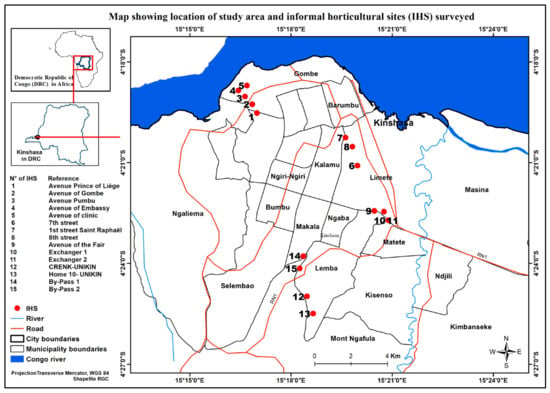
Figure 1
Open AccessArticle
Development and Evaluation of the Plankton Biological Integrity Index (P-IBI) in Dry and Wet Seasons for Dianchi Lake
by
Jia-Le Cao, Hong-Yi Liang, Ya-Hui Zhang, Shi-Lin Du, Jin Zhang and Yong Tao
Ecologies 2024, 5(1), 68-82; https://doi.org/10.3390/ecologies5010005 - 26 Jan 2024
Cited by 1
Abstract
►▼
Show Figures
As an important component of lake ecosystems, plankton are often used as indicators to evaluate the health of aquatic ecosystems, such as lakes and reservoirs. The plankton integrity index (P-IBI) is a highly utilized method for evaluating the ecological health of the lakes.
[...] Read more.
As an important component of lake ecosystems, plankton are often used as indicators to evaluate the health of aquatic ecosystems, such as lakes and reservoirs. The plankton integrity index (P-IBI) is a highly utilized method for evaluating the ecological health of the lakes. This study took Dianchi Lake, located in the Yangtze River Basin, as the research object and analyzed the phytoplankton, zooplankton communities, and environmental factors at 11 sampling points in this lake during the wet season (July) in 2022 and the dry season (February) in 2023. The P-IBI was established to evaluate the health status of this lake ecosystem. The results showed that a total of 83 species of phytoplankton and 31 species of zooplankton were identified in Dianchi Lake, and the number of plankton species in the dry season was significantly higher than that in the wet season. The P-IBI evaluation results for the two hydrological periods were generally “good”. Linear regression analysis showed that there was a certain negative correlation between the P-IBI value and the comprehensive trophic level index (TLI), and the evaluation results were generally in line with the actual situation of the water body. Redundancy analysis (RDA) showed that there was a significant correlation between the P-IBI and its constituent parameters and individual water quality environmental factors, such as total nitrogen (TN) and electrical conductivity (EC). In summary, by reducing errors caused by spatial and temporal changes across various hydrological periods, P-IBI represents a more scientifically rigorous technique for lake water ecological health assessments within a certain time range.
Full article
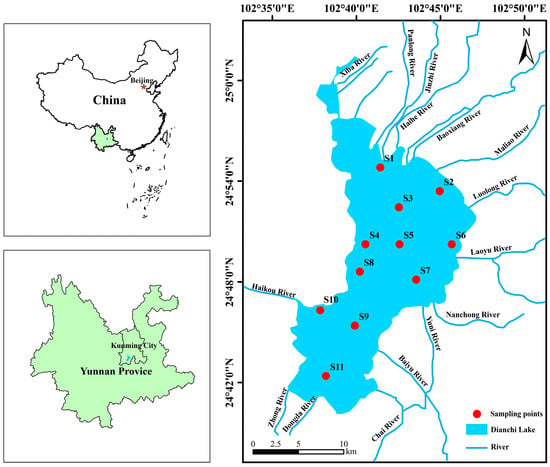
Figure 1
Open AccessArticle
The Perspectives of Key Stakeholders on the Reintroduction of Apex Predators to the United Kingdom
by
Shannon Wilson and Marco Campera
Ecologies 2024, 5(1), 52-67; https://doi.org/10.3390/ecologies5010004 - 24 Jan 2024
Abstract
►▼
Show Figures
Apex predators were extirpated from the UK hundreds of years ago. Practitioners have recently advocated for reintroductions of predators in the UK given their role as keystone species. For a reintroduction to take place, a survey of public desirability needs to be conducted.
[...] Read more.
Apex predators were extirpated from the UK hundreds of years ago. Practitioners have recently advocated for reintroductions of predators in the UK given their role as keystone species. For a reintroduction to take place, a survey of public desirability needs to be conducted. We aimed to understand the perspectives of people across the United Kingdom on the reintroduction of Eurasian lynxes, gray wolves, and brown bears. We collected data via mixed-methods questionnaires from 78 key stakeholders, such as farmers, the general public, nature conservationists, and those in environmental sectors, with these areas being seen as the most affected by these reintroductions. It was organizations that front these stakeholder groups which mainly distributed the survey as well as social media groups. We ran a path analysis, which highlighted that there was a negative correlation between respondents viewing the species as a danger toward livestock and humans, and the respondent seeing it as being good to have that species in their region. Overall, participants who stated that rewilding their region was a priority also stated that it would be good to have Eurasian lynx in their region. That said, 70% of farmers strongly disagreed with the reintroduction of Eurasian lynx. These findings showed that much of the United Kingdom would welcome the reintroduction of Eurasian lynx, but both farmers and the public would fear the loss of livestock that may come along with these species. Support can be gained through education and knowledge, which is a necessary step needed especially targeting farmers before any reintroduction plans can be made.
Full article
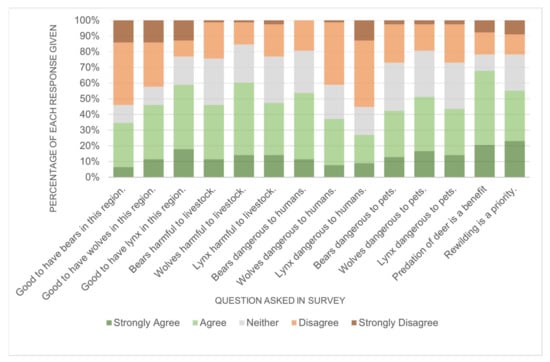
Figure 1
Open AccessArticle
Using Biodiversity Indices Effectively: Considerations for Forest Management
by
Kyriaki Kitikidou, Elias Milios, Athanasios Stampoulidis, Elias Pipinis and Kalliopi Radoglou
Ecologies 2024, 5(1), 42-51; https://doi.org/10.3390/ecologies5010003 - 18 Jan 2024
Abstract
►▼
Show Figures
Since biodiversity is a multifaceted aspect of natural systems, several indices have been suggested to measure it. In this paper, we examined a number of well-known diversity indexes to see whether some performed better than others when applied to forest data. In order
[...] Read more.
Since biodiversity is a multifaceted aspect of natural systems, several indices have been suggested to measure it. In this paper, we examined a number of well-known diversity indexes to see whether some performed better than others when applied to forest data. In order to reach this goal, we used data on basic forest variables (such as the diameters, heights, and volumes of trees) from forest plots to see if common diversity indices lead to the same conclusions about changes in biodiversity in a pairwise comparison (i.e., comparing the same region at two different times or two different regions at the same time). Out of a collection of 17 diversity indices, 8 of them exhibited robustness, indicating their constant ability to demonstrate either an increase or decrease in biodiversity over pairwise comparisons. However, it is important to note that the remaining seven diversity indices may yield inconsistent or inconclusive results, but only with regard to forest data, highlighting the complexity and nuances of measuring biodiversity with different sorts of data. In this review article, all 17 indices are presented, allowing the reader to choose which ones are most applicable to their particular dataset (genetic, econometric, sociometric, etc.).
Full article
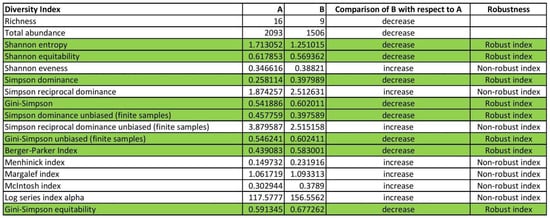
Figure 1
Open AccessArticle
The Restoration of Degraded Landscapes along the Urban–Rural Gradient of Lubumbashi City (Democratic Republic of the Congo) by Acacia auriculiformis Plantations: Their Spatial Dynamics and Impact on Plant Diversity
by
Yannick Useni Sikuzani, Héritier Khoji Muteya, Jonas Yona Mleci, Médard Mpanda Mukenza, François Malaisse and Jan Bogaert
Ecologies 2024, 5(1), 25-41; https://doi.org/10.3390/ecologies5010002 - 14 Jan 2024
Abstract
This study examines the spatio-temporal dynamics of Acacia auriculiformis in Lubumbashi city, southeastern Democratic Republic of Congo, in the context of rapid urbanization following the liberalization of the mining sector. The city has experienced significant demographic growth and unplanned spatial expansion, resulting in
[...] Read more.
This study examines the spatio-temporal dynamics of Acacia auriculiformis in Lubumbashi city, southeastern Democratic Republic of Congo, in the context of rapid urbanization following the liberalization of the mining sector. The city has experienced significant demographic growth and unplanned spatial expansion, resulting in a decrease in vegetation cover. The introduction and proliferation of A. auriculiformis, an exotic tree species, have occurred without strategic planning or monitoring. Utilizing digitized remote sensing imagery from 2006, 2014, and 2021, we quantified the expansion of A. auriculiformis along the urban–rural gradient. Additionally, a floristic inventory conducted in 2021 provided insights into tree diversity within A. auriculiformis plantations. Our findings indicate a substantial increase in the number and area of A. auriculiformis patches, predominantly in urban zones. However, the patch values, highest in 2006, were shown to decline by 2021, especially in urban areas. The floristic inventory identified 39 tree species within A. auriculiformis plantations, including predominant species such as Albizia lebbeck, Albizia alba, and Leucaena leucocephala. Notably, 20 of these species are exotic, with half being invasive. In contrast, the 19 indigenous species were primarily found in peri-urban areas. While a greater number of tree species were observed in urban zones, larger average diameters were recorded in peri-urban zones. The persistence and expansion of A. auriculiformis in a landscape characterized by declining tree cover suggest its potential sustainability in this setting. However, A. auriculiformis plantations have facilitated the establishment of predominantly exotic and potentially invasive species. These findings highlight the need for the strategic management of A. auriculiformis and associated exotic flora to mitigate their spread and to consider their role in the restoration of degraded lands.
Full article
(This article belongs to the Special Issue Plant Communities: Identification, Monitoring and Evaluation of Temporal Dynamics)
►▼
Show Figures
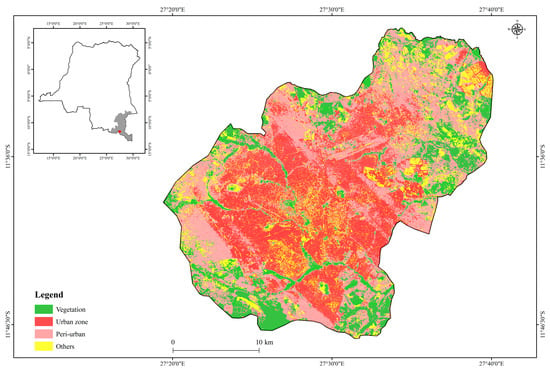
Figure 1
Open AccessArticle
Comparisons of Twelve Freshwater Mussel Bed Assemblages Quantitatively Sampled at a 15-year Interval in the Buffalo National River, Arkansas, USA
by
Anna M. Pieri, John L. Harris, Mickey W. Matthews, Shawn W. Hodges, Ashley R. Rodman, Jennifer L. Bouldin and Alan D. Christian
Ecologies 2024, 5(1), 1-24; https://doi.org/10.3390/ecologies5010001 - 23 Dec 2023
Abstract
Historically, 23 freshwater mussel species have been documented from the Buffalo National River (BNR), a 246 km, free-flowing river in northern Arkansas. The potential threats to BNR include land use/land cover changes, eutrophication, recreation, physical habitat changes, and various climate change-related effects. Twelve
[...] Read more.
Historically, 23 freshwater mussel species have been documented from the Buffalo National River (BNR), a 246 km, free-flowing river in northern Arkansas. The potential threats to BNR include land use/land cover changes, eutrophication, recreation, physical habitat changes, and various climate change-related effects. Twelve quantitative mussel bed sites were established and then sampled using a stratified random sampling protocol to evaluate the long-term changes between 2006 and 2020–2021 in population and assemblage characteristics. We compared (1) overall mussel bed persistence, sampling confidence levels and study-wide relative abundances, and compared species’ size and size-frequency distributions; (2) 10 overall site assemblage variables using paired t-tests; (3) site-level mean density, richness, and diversity indices using pair-wise Mann–Whitney U statistics; and (4) assemblage composition using Non-Metric Multidimensional Scaling. The major findings included the following: (1) sampling efforts based on a targeted 80% confidence level appears relatively robust, (2) BNR mussel assemblage composition and structure were relatively stable (however, small mussel bed persistence is a concern), (3) 7 of 23 sites were outliers based on freshwater mussel composition and habitat characteristics, and (4) assemblage composition changed with three species declining (Actinonaias ligamentina, Lasmigona costata, and Ptychobranchus occidentalis) and four species increasing (Cambarunio hesperus, Cyclonaias tuberculata, Eurynia dilatata, and Venustaconcha pleasii) between monitoring events.
Full article
(This article belongs to the Special Issue Freshwater Ecology and Conservation: Threats, Opportunities, and Solutions)
►▼
Show Figures
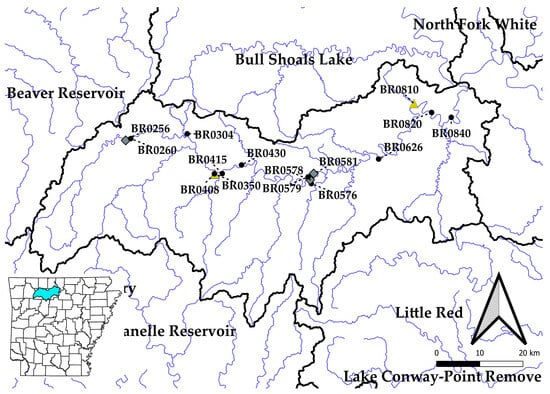
Figure 1
Open AccessArticle
Assessing the Impacts of Climate Change on the At-Risk Species Anaxyrus microscaphus (The Arizona Toad): A Local and Range-Wide Habitat Suitability Analysis
by
Sam M. Driver, Cord B. Eversole, Daniel R. Unger, David L. Kulhavy, Christopher M. Schalk and I-Kuai Hung
Ecologies 2023, 4(4), 762-778; https://doi.org/10.3390/ecologies4040050 - 13 Dec 2023
Cited by 1
Abstract
►▼
Show Figures
Anaxyrus microscaphus (The Arizona Toad) is an at-risk species that is endemic to the southwestern United States. Despite conservation concerns, little is known about the ecological drivers of its distribution and habitat use. We investigated the potential distribution of A. microscaphus at the
[...] Read more.
Anaxyrus microscaphus (The Arizona Toad) is an at-risk species that is endemic to the southwestern United States. Despite conservation concerns, little is known about the ecological drivers of its distribution and habitat use. We investigated the potential distribution of A. microscaphus at the range-wide scale and local scales (i.e., Zion National Park), using MaxEnt to model habitat suitability under current and future climate scenarios. Our models incorporated 12 environmental variables, including climatic, geomorphological, and remotely sensed data. The results showed good model accuracy, with temperature and elevation being the top contributing variables. Currently, 42.6% of the park’s area provides a suitable habitat for A. microscaphus, but projections for 2050 and 2070 indicate a significant reduction in suitable habitat across its range. Temperature was the most influential variable, with habitat suitability decreasing as the annual mean temperatures exceeded 10 °C. Precipitation, vegetation, and topography variables also significantly contributed to the models. The most suitable habitat within Zion National Park occurred along sloped rivers and streams and in valleys with sandy soils, emphasizing the importance of riparian habitat conservation for A. microscaphus survival and persistence. As climate change progresses, the species’ habitat is expected to become increasingly constrained across local and range-wide scales. Our models demonstrated a shift in the suitable habitat towards major river systems, indicating a potential reliance on larger permanent river systems as smaller, more ephemeral habitats decrease in size and abundance. Future management strategies should prioritize conserving and enhancing the resilience of these habitats. MaxEnt models can guide population survey efforts and facilitate the identification of priority conservation areas, saving time and resources for species of concern such as A. microscaphus. Further research, including field surveys and large-scale analyses, is necessary to further refine our understanding of this species’ distribution and how it may be impacted by climate and habitat change.
Full article
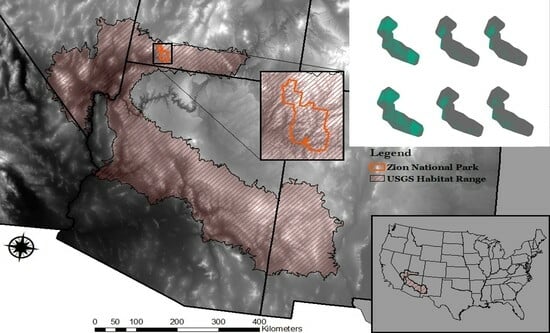
Graphical abstract
Open AccessArticle
Effects of Environmental Factors on Plant Productivity in the Mountain Grassland of the Mountain Zebra National Park, Eastern Cape, South Africa
by
Nthabeliseni Munyai, Abel Ramoelo, Samuel Adelabu, Hugo Bezuidehout and Hassan Sadiq
Ecologies 2023, 4(4), 749-761; https://doi.org/10.3390/ecologies4040049 - 01 Dec 2023
Abstract
►▼
Show Figures
The relationship between plant productivity, measured according to biomass and species richness, is a fundamental focal point in community ecology, as it provides the basis for understanding plant responses or adaptive strategies. Although studies have been conducted on plant biomass and environmental factors,
[...] Read more.
The relationship between plant productivity, measured according to biomass and species richness, is a fundamental focal point in community ecology, as it provides the basis for understanding plant responses or adaptive strategies. Although studies have been conducted on plant biomass and environmental factors, research concerning mountainous grassland areas is scarce. Therefore, the aim of the present study was to examine the influence of environmental factors on aboveground plant biomass in the mountainous grassland of the Mountain Zebra National Park, South Africa. Biomass distribution was uneven within the park, owing to certain species having relatively higher biomass values. These differences may be attributed to the chemical and physical properties of the soil, including carbon and nitrogen content, soil pH, and soil texture (sand, silt, and coarse fragments). A disc pasture meter was used to collect biomass data. Multiple regression analysis revealed that most environmental factors did not significantly influence plant biomass. The only environmental factor influencing plant biomass was soil pH; the influences of other factors were not statistically significant. The results of this study elucidate the interactions of environmental factors with plant biomass. Future research could investigate how environmental factors influence plant biomass, both below and above the ground in mountainous grassland.
Full article
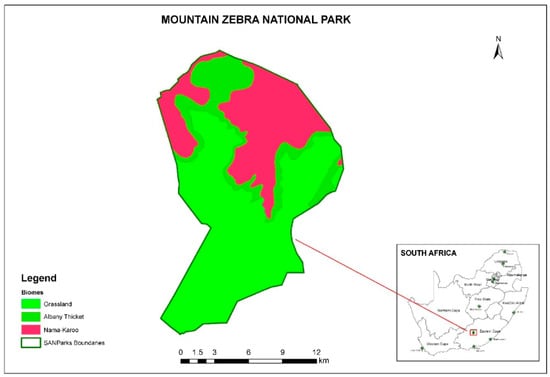
Figure 1
Open AccessArticle
Soil Conditioning and Neighbor Identity Influence on Cycas Seedling Performance
by
Thomas E. Marler
Ecologies 2023, 4(4), 731-748; https://doi.org/10.3390/ecologies4040048 - 23 Nov 2023
Abstract
►▼
Show Figures
Translocation of endangered plant species and facilitating in situ regeneration require knowledge of the factors that define suitable habitat characteristics. Four approaches were employed to define how antecedent and contemporary plant identity influenced Cycas seedling growth and survival in Guam, Yap, and the
[...] Read more.
Translocation of endangered plant species and facilitating in situ regeneration require knowledge of the factors that define suitable habitat characteristics. Four approaches were employed to define how antecedent and contemporary plant identity influenced Cycas seedling growth and survival in Guam, Yap, and the Philippines. Cycas micronesica K.D. Hill or Cycas nitida K.D. Hill & A. Lindstr. seedlings growing beneath the canopy of the maternal parent tree reached 100% mortality in 4 to 8 year. Cycas micronesica seedlings planted beneath a conspecific male adult tree reached 68% mortality in two years while seedlings planted away from a conspecific individual exhibited 100% survival. Cycas micronesica seedlings planted beneath monostands of invasive Leucaena leucocephala (Lam.) de Wit or Vitex parviflora Juss. reached 40% mortality in two years while seedlings planted in adjacent native forest cover exhibited 100% survival. Cycas micronesica seedlings planted in soil conditioned for 9 months by conspecifics, heterospecific native species, Carica papaya L., L. leucocephala, or V. parviflora exhibited the greatest growth in the soils conditioned by heterospecific natives and the least growth in the soils conditioned by the three invasive species. The seedlings growing in soil conditioned by conspecifics exhibited the most coralloid roots and the greatest shoot:root ratio. These studies confirmed that the identity of antecedent and competitive plants strongly influenced the longevity and growth of Cycas seedlings. Conservationists may improve outcomes by avoiding degraded forests that have experienced invasive plant species when positioning translocation projects. Planting Cycas seedlings in biodiverse native forest but away from a conspecific individual may lead to the greatest success in population recovery.
Full article
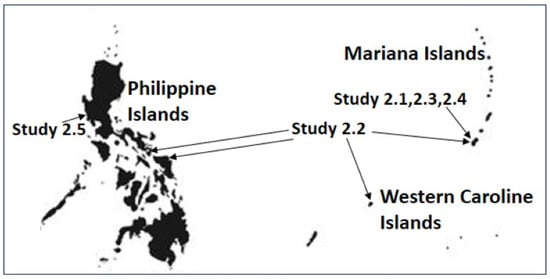
Figure 1
Open AccessReview
Balancing Livestock Environmental Footprints with Forestry-Based Solutions: A Review
by
Tamirat Solomon, Vaishali Gupta and Chris Major Ncho
Ecologies 2023, 4(4), 714-730; https://doi.org/10.3390/ecologies4040047 - 09 Nov 2023
Abstract
Livestock production, as one of the oldest and most significant human activities, plays a vital role in fulfilling the global demand for human nutrition and other animal-related products while contributing to poverty reduction. However, it is also important to address the environmental impact
[...] Read more.
Livestock production, as one of the oldest and most significant human activities, plays a vital role in fulfilling the global demand for human nutrition and other animal-related products while contributing to poverty reduction. However, it is also important to address the environmental impact of livestock animals. Over 60% of the global biomass harvested annually to support human activity is directed towards this sector, raising concerns about its sustainability. In addition to substantial water and fertilizer usage reported in recent years, it is estimated that 14.5% of global greenhouse gas emissions are generated by the livestock sector. Furthermore, the increasing amount of manure resulting from intensive animal farming raises concerns about its disposal and potential water pollution. The degradation of pasture and rangeland is another significant contributor to soil erosion. Multiple approaches are being studied to reduce the environmental impact of livestock production, but a sustainable alternative may be through forestry. Forests play a vital role in countering livestock emissions by absorbing billions of tons of carbon dioxide each year, and they act as a crucial carbon sink. Furthermore, the diversity and age of forests impact the carbon sequestration process. Forests also help to combat climate change by reducing soil erosion and regulating the water cycle. As such, sustainable forest management is essential as forests provide multiple benefits, including economic, environmental, and social benefits, while also sequestering carbon. In this review, the current impact of modern livestock production is described, along with the potential for mitigating it through forestry-based solutions.
Full article
(This article belongs to the Special Issue Feature Papers of Ecologies 2023)
►▼
Show Figures
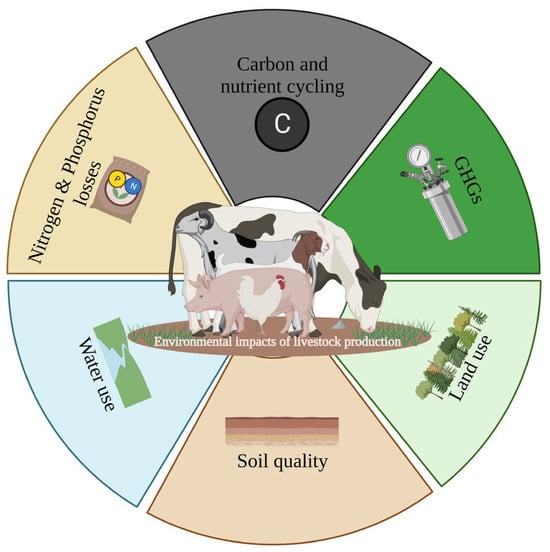
Figure 1
Open AccessBrief Report
Artificial Light at Night (ALAN) Influences Understory Plant Traits through Ecological Processes: A Two-Year Experiment in a Rubber Plantation in China
by
Cong Zhou, Akihiro Nakamura, Xiaoyang Song and Masatoshi Katabuchi
Ecologies 2023, 4(4), 704-713; https://doi.org/10.3390/ecologies4040046 - 09 Nov 2023
Abstract
►▼
Show Figures
Artificial light at night (ALAN) demonstrated a new ecological factor that influences organisms through a multi-approach. Yet, the impacts of ALAN on understory plants remain largely unknown. We evaluated whether ALAN would affect the leaf mass per area (LMA) of understory plants through
[...] Read more.
Artificial light at night (ALAN) demonstrated a new ecological factor that influences organisms through a multi-approach. Yet, the impacts of ALAN on understory plants remain largely unknown. We evaluated whether ALAN would affect the leaf mass per area (LMA) of understory plants through a two-year field light experiment in a tropical rubber plantation in south China. We hypothesized that ALAN could impact the understory in two ways: by directly supplementing light to aboveground plant parts (which increases LMA) and indirectly affecting soil nutrient composition by attracting insects (which decreases LMA). We selected two species: Colocasia gigantea, representing shade-tolerant species, and Melastoma candidum, representing light-demanding species. We measured canopy openness, LMA, soil nutrients, and individual distance away from light resources. Our Bayesian linear mixed model showed a negative relationship between LMA and the strength of ALAN, indicating that ALAN may influence LMA more indirectly by enhancing soil nutrient availability rather than directly acting as a light resource. This relationship was significant for Colocasia gigantea but not for Melastoma candidum. These results suggest that ALAN might have complex and species-specific impacts on the understory ecosystem. Our study underscores the need for continued research and informed management of anthropogenic ecosystems.
Full article
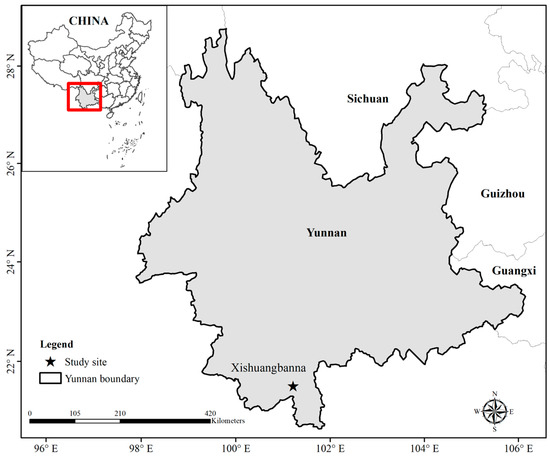
Figure 1
Highly Accessed Articles
Latest Books
E-Mail Alert
News
Topics
Topic in
Biology, Ecologies, Forests, Microorganisms, Plants
Litter Decompositions: From Individuals to Ecosystems
Topic Editors: Wen Zhou, Guihua LiuDeadline: 30 April 2024
Topic in
Diversity, Ecologies, JMSE, Sustainability, Water
Marine Ecology, Environmental Stress and Management
Topic Editors: Michael Karydis, Maurizio AzzaroDeadline: 30 August 2024
Topic in
Applied Sciences, Climate, Ecologies, JMSE, Water
Climate Change and Aquatic Ecosystems: Impacts, Mitigation and Adaptation
Topic Editors: Helena Veríssimo, Tiago VerdelhosDeadline: 20 September 2024

Conferences
Special Issues
Special Issue in
Ecologies
The Ecology of Rivers, Floodplains and Oxbow Lakes
Guest Editors: Volker Lüderitz, José Arévalo SierraDeadline: 30 April 2024
Special Issue in
Ecologies
Fungi, Ecology, and Global Change
Guest Editor: Daniel B. RaudabaughDeadline: 31 May 2024
Special Issue in
Ecologies
Population Modeling for Ecological Risk Assessment and Management of Species
Guest Editors: Valery E. Forbes, Sandy RaimondoDeadline: 30 June 2024
Special Issue in
Ecologies
Feature Papers of Ecologies 2024
Guest Editor: José Arévalo SierraDeadline: 31 December 2024



